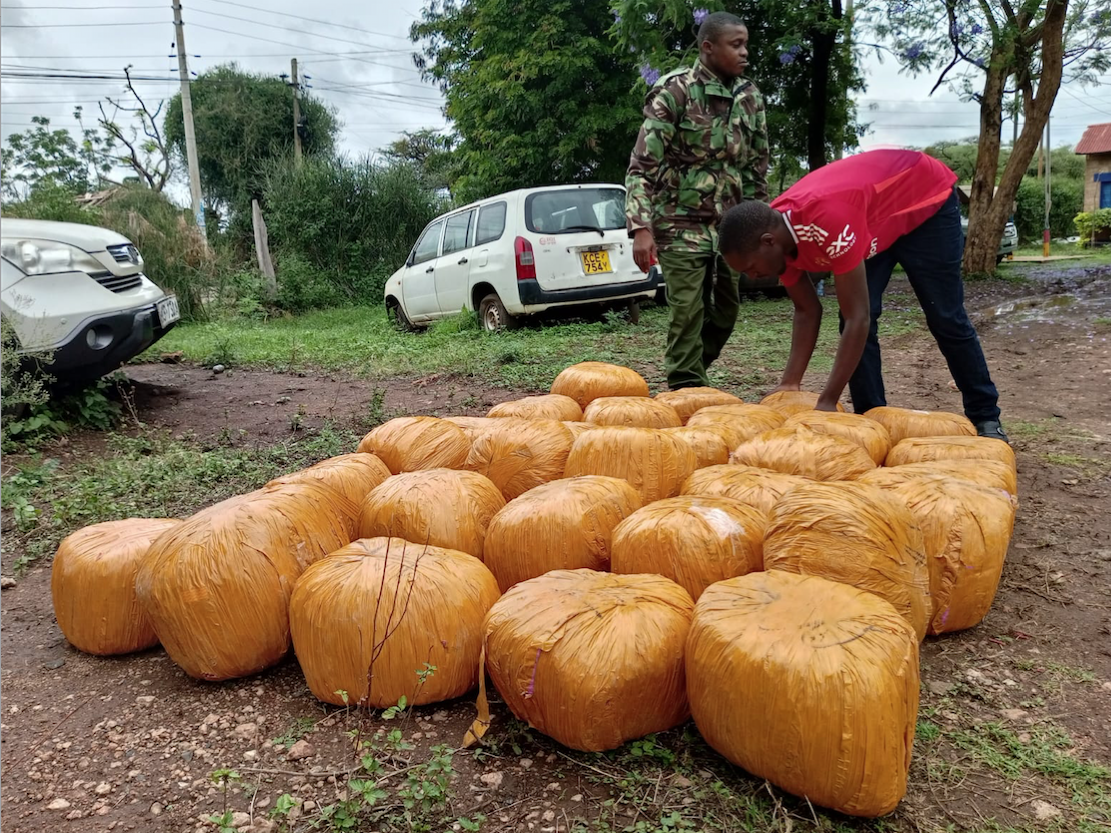

A report by the National Crime Research Centre has exposed key sources of Cannabis that is consumed in Kenya
Cannabis, commonly known as bhang in Kenya, has become a major concern for law enforcement agencies, health profession policymakers across the country
Despite ongoing efforts to curb its use, the illicit trade and consumption of cannabis continue to thrive, largely fueled by both local cultivation and trafficking from neighboring countries.
The growing demand for the substance, along with a variety of socio-economic and political factors, has made Kenya a key player in the East African drug trade.
A report by NCRC has revealed that the majority of cannabis consumed in Kenya is trafficked from neighbouring countries, such as Ethiopia, Uganda, Tanzania, Malawi, and South Africa.
These countries have long histories of cannabis cultivation, and their proximity to Kenya makes them prime sources for trafficking operations.
The porous borders between Kenya and these nations allow smugglers to move large quantities of cannabis with relative ease, often evading detection by authorities.
The report says Ethiopia, in particular, is a significant source of cannabis for Kenya.
Similarly, Uganda and Tanzania also serve as major sources of bhang to Kenya owing to weak border enforcement and the demand for cannabis in Kenya's urban centres, the report said.
The report also added that South Africa, though it is geographically further from Kenya, has increasingly become a source of cannabis smuggling.
The reports say that the high demand for cannabis in Kenya has created lucrative opportunities for international cartels to ship cannabis into the country, often disguised as other goods.
The relative ease of shipping goods across borders and the growing sophistication of trafficking networks have made South Africa a key player in the regional drug trade, the report said.
In addition to cannabis being smuggled from neighbouring countries, local cultivation of cannabis is widespread across Kenya.
Cannabis plants are grown in various regions, including forests, farmlands, and even urban areas.
The cultivation of bhang in Kenya is not limited to remote areas but has increasingly become visible in urban and peri-urban settings, including on rooftops, in kitchen gardens, and other inconspicuous locations.
A convicted trafficker in Migori Prison had this to say on border porosity:
“I used to travel to Tanzania on a motorcycle through various panya routes to pick my supply of cannabis. There are numerous unmanned border points and I can tell you for free that a lot of other contrabands get into the country undetected.”
Some of the most significant cannabis cultivation areas are in rural regions, where farmers turn to cannabis cultivation as a lucrative alternative to traditional crops.
A probation officer confirmed the cultivation of cannabis in Meru and Mt Kenya forests:
“Bang is cultivated in Meru and Chuka Forests. In addition, most of the weed supplies in Tharaka Nithi originate from Mt Kenya Forest. In Meru Forest, it is cultivated in places where they have just cleared the production of charcoal, since it grows very fast in this condition.”
However, the widespread practice of growing cannabis in rural areas has drawn the attention of both law enforcement agencies and local communities, as it contributes to the proliferation of the drug throughout the country.
Urban areas, too, have seen an increase in local cannabis cultivation, particularly in neighbourhoods with high poverty levels and limited access to alternative sources of income.
Building rooftops and hidden gardens have become popular spots for urban cultivation, with cannabis plants thriving in these unexpected environments.
This local production is often linked to the high demand for cannabis in urban centres, where young people, in particular, are drawn to the drug.
Local cultivation also plays a significant role in meeting the demand for cannabis, with plants grown in rural areas, urban neighbourhoods, and even on rooftops.
The normalization of cannabis use, corruption among law enforcement officials, porous borders, and economic incentives for traffickers all contribute to the growth of the cannabis trade in Kenya.



